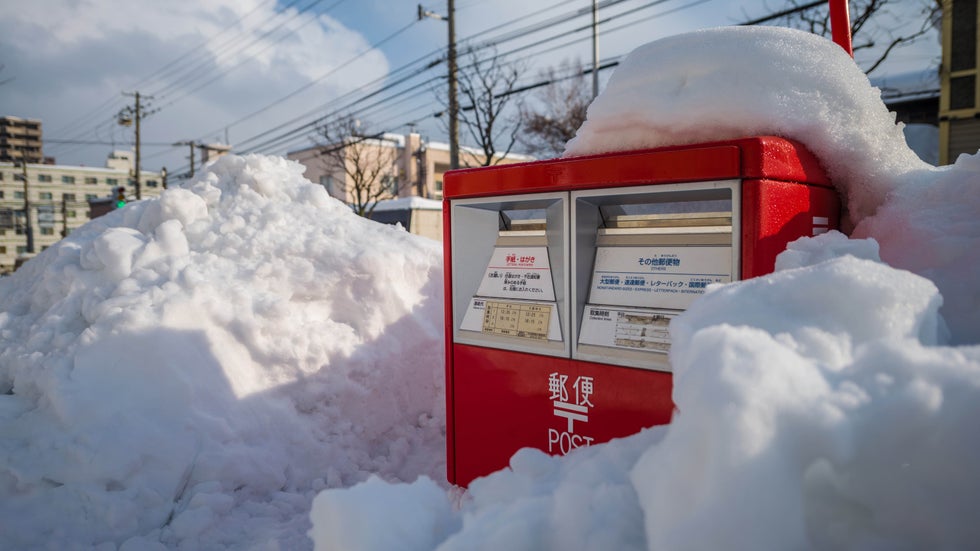
"Once in a lifetime" heavy snowfalls could become five times more likely in Japan if the climate continues to warm at its current pace, according to a team of scientists from Tohoku University and the Meteorological Research Institute of the Japan Meteorological Agency.
Their study, which used supercomputer climate model simulations, was published Monday in the online Journal of Geophysical Research: Atmospheres. It factored in the 1.8-degree Fahrenheit temperature rise from the pre-Industrial Revolution level, as well as the International Panel on Climate Change (IPCC) prediction that average global temperatures could increase by up to 8.6 degrees by the end of the 21st century if no measures are taken to combat climate change.
The researchers simulated three different scenarios for mountainous areas on the Sea of Japan side of the country, including the area from the Tohoku region in the north to the southern main island of Kyushu. The three simulations were no change in current temperatures, which have already risen by 1.8 degrees Fahrenheit; an increase of 3.6 degrees from the level prior to the Industrial Revolution (late 1700s and early 1800s); and the worst-case scenario, a rise of 7.2 degrees from that level.
The results concluded that a 7.2-degree increase in global temperatures would make heavy snowfalls of more than roughly 2 feet five times more likely to occur in mountainous areas from the southern part of Yamagata Prefecture to Gifu Prefecture in central Japan.
"Such heavy snowfalls, which currently happen around once in 42 years, could occur with a higher probability of once in eight or nine years," Takahiro Sasai, an assistant professor at Tohoku University specializing in meteorology who was involved in the study, told the Asahi Shimbun.
On the other hand, such snowfalls could decrease on the Pacific Ocean side of Japan under the same conditions, Sasai added.
More seawater is able to be evaporated when temperatures are warmer because warm air can hold more moisture than cold air. Therefore, a warmer climate will likely lead to an increase in the amount of water vapor in the atmosphere, providing the fuel necessary for heavy snow.
Additionally, cold air is expected to flow southward from the Arctic Circle into Japan more frequently in a warming world, according to the study. That, combined with increased moisture, will set the stage for the more frequent heavy snowfalls on the Sea of Japan side of the nation, the study found.
A separate study by a team of researchers that included scientists from the University of Tokyo concluded that if temperatures rise by 8.6 degrees, a large portion of Japan would experience more frequent heavy rainfalls.
The Weather Company’s primary journalistic mission is to report on breaking weather news, the environment and the importance of science to our lives. This story does not necessarily represent the position of our parent company, IBM.
The Weather Company’s primary journalistic mission is to report on breaking weather news, the environment and the importance of science to our lives. This story does not necessarily represent the position of our parent company, IBM.

No comments:
Post a Comment